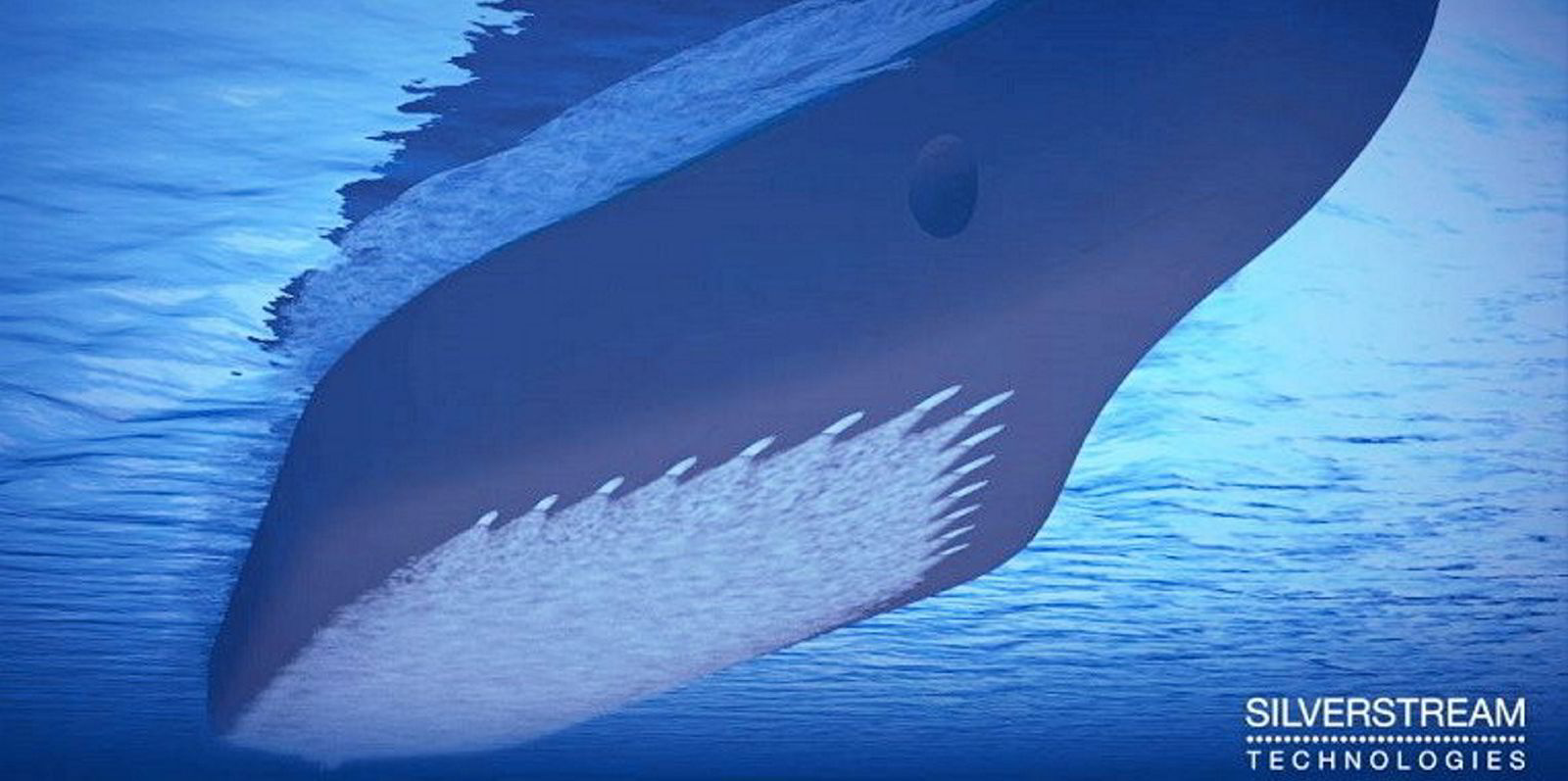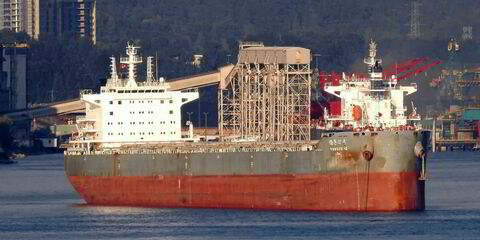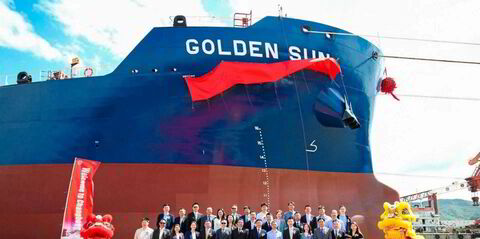For many in shipping, zero-carbon fuels feel so far away, not only from a technology standpoint but also because of how long it will take to scale up supply.
But as shipping faces growing calls to take steps to tackle its greenhouse gas footprint now, rather than wait for a silver bullet fuel to emerge, one decarbonisation tool appears to be increasingly floating into the mainstream: bubbles.
Carnival Corp, the world’s largest operator of cruise ships, recently unveiled plans to install air lubrication systems on at least 10 more vessels, on top of four ships already utilising the technology that uses a layer of tiny bubbles to increase fuel efficiency at sea. Retrofits already in the pipeline will bring the bubble-propelled fleet to 17.
“We’ve seen good results from the air lubrication systems we’ve installed, and so we’re going to install more of them,” said William Burke, the retired US Navy admiral who is Carnival’s chief maritime officer.
The cruise giant’s effort, using systems developed by UK-based Silverstream Technologies, is the latest adoption of air lubrication by a growing cadre of big-name shipowners.
It only takes a search through the TradeWinds’ archives to see the growing club of air lubrication users: Italy’s Grimaldi Group with an order for 10 car carrier newbuildings, Klaveness Combination Carriers with a deal to add the tech for two to 11 of its vessels and container giant Mediterranean Shipping Co for last year’s order of 30 systems.
Silverstream Technologies founder chief executive Noah Silberschmidt, who said there may be 40 Carnival vessels that could eventually use the technology, likened air lubrication to a “magic carpet” under a vessel.
The systems use a layer of bubbles on the flat-bottom portion of a ship’s hull that helps reduce water resistance, meaning that less of the vessel’s propulsion is used to overcome that drag. Fuel savings are in the range of 5% to 10%, the executive said.
More customers
He said the company is working with other customers in a variety of segments that could see 20 vessels or more being retrofitted to use air lubrication.
“We see that the industry has reached a tipping point, and we are seeing exponential growth from our side, and we are scaling up fast at Silverstream,” he said.

That means the company has expanded to 90 people with offices in London and Shanghai, and it has hired scientists and software developers to prove fuel savings and use digital tools to improve them.
Air lubrication is among energy-saving technologies — which also include propeller ducts and Flettner rotors that have been fitted on over 5,640 ships — accounting for 24.8% of the global fleet, according to a recent report by Clarksons Research. That compares with just 18% five years ago.

But that means more than three-quarters of the global shipping fleet has still not adopted any of the energy-saving technologies, let alone air lubrication, leaving a low-hanging fruit for progress on decarbonisation.
Air lubrication is not a cure-all, and for Miami-headquartered Carnival it is part of a variety of efforts to reduce its fleet’s carbon intensity and overall greenhouse gas footprint. Other pieces of the puzzle include eliminating older vessels, as well as tackling waste heat, adopting LED lighting and making itineraries more efficient. Ordering LNG-powered vessels are on the list, although that fuel’s carbon-cutting credentials are a subject of debate over methane emissions.
Carnival has been testing air lubrication technology since 2016.
Burke said that the experience with Carnival’s four ships featuring air lubrication shows that it is effective at speeds of between 10 knots and as high as 18 or 20 knots, depending on the system. The best efficiency results come from travelling at 12 to 16 knots, when 5% to 6% fuel savings can be achieved.
“When you think about what we’re doing, to get more efficient, 5% to 6% is pretty significant,” he said.

But air lubrication does not help when ships are in port, and while Burke said he would hope that Carnival would adopt the technology for more ships, he said some ships benefit more than others, depending on class of vessel and itinerary. There is a sweet spot for this low-hanging fruit.
“The further you go away from that, the fruit you’re going to pick is a little higher up on the tree and so it gets a little a little more challenging to make it work because … payback periods are pretty long on these things,” he said.
_____________
More on environmental sustainability and the business of the ocean
_____________
Green shipping corridors get big push at COP27 talks
Paul Berrill writes that initiatives to develop green shipping corridors involving the US, Netherlands, Norway, Singapore and the UK are emerging from discussions around the COP27 climate change talks in Egypt.
The UK Department for Transport said the country will join forces with the US, Norway and the Netherlands to roll out end-to-end decarbonised routes.
Separately, the Maritime & Port Authority of Singapore (MPA), Port of Los Angeles and Port of Long Beach said they have begun discussions to establish a green and digital shipping corridor between Singapore and the San Pedro Bay port complex.
_____________
Star Bulk’s carbon intensity rises as charterers demand bulkers go faster
Greece’s Star Bulk Carriers has reported its carbon emissions, and like many other in the shipping space, greenhouse gas pollution is on the rise.
Gary Dixon reports that the New York-listed dry bulk shipping giant’s carbon intensity has increased as charterers asked its bulkers to speed up.
The bulker owner said the fleet’s annual efficiency ratio (AER) rose to 3.43 last year from 3.25 in 2020.
_____________
Shipping’s new-fuels policy puts carbon credibility on the line, says report
Paul Peachey writes on a new report fuelling discussion at COP27 in Egypt that found that the failure of shipping companies to invest in alternative fuels calls into question the credibility of the industry’s emissions-cutting targets.
South Korean shipowner HMM emerged as the best prepared of the major shipping companies to cut carbon from its operations, but progress on hitting net-zero targets across the transport sector has been limited, warned the Dutch-based non-profit World Benchmarking Alliance.
A “significant proportion” of the 17 shipping companies it assessed for their climate strategies and performance had done nothing to develop the alternative fuels that will drive the industry towards net zero. This “calls into question the credibility of many of the shipping companies’ decarbonisation targets”.



